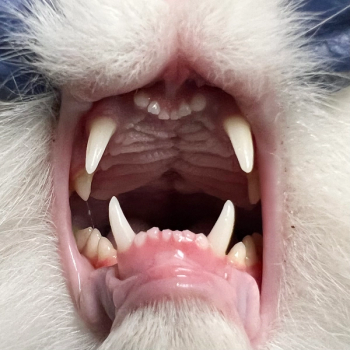
Overview of methods of fracture fixation (Proceedings)
Metallic implants placed in the body should be corrosion-resistant, biocompatible, and must have adequate strength to withstand functional stress. Corrosion of metal occurs because of the electrochemical ions in body fluid. Most metal implants currently used in veterinary surgery are of 316L stainless steel.
Implants
Metallic implants placed in the body should be corrosion-resistant, biocompatible, and must have adequate strength to withstand functional stress. Corrosion of metal occurs because of the electrochemical ions in body fluid. Most metal implants currently used in veterinary surgery are of 316L stainless steel. This is a low carbon steel with chromium nickel and molybdenum. Surfaces of some implants are treated with a corrosion resistant film. Metallic implants include pins, screws, plates, wire, and some prosthetic devices. There are others including Titanium alloys which are lighter and stronger than stainless steel but more expensive, and Cobalt-chromium alloys which are used in prosthetic devices like artificial hips. Furthermore, bone cement (methylmethacrylate) can be used to form around pre-placed screws where contouring of metal plates is difficult, e.g. spine and acetabulum but should not be used for long bone fractures. There are also a variety of polymers used in joint replacements.
Implant failures
It is an easy concept to understand that all implants used in fracture repairs will fail at some point if the fracture does not heal. This failure may occur in weeks or it may take months to years. One of the most common methods of failure is fatigue failure of the metallic implant. Almost all implant failures are due to improper utilization, not a defective implant! Almost all implant failures occur at a point where there is an abrupt change in implant shape e.g. hole in the bone plate or diameter-shape change in an intramedullary device (pin). These points are known as "stress risers," and the surgeon should avoid putting them directly adjacent to the fracture site.
Common types of Implants
Intramedullary pins
Intramedullary pins are the most commonly used fixation device in general veterinary practice today. Unfortunately they are often overused on the premise that some fixation is better than no fixation. We will discuss indications for their use and the common ancillary fixation devices used with IM pins.
Steinmann Pins
Solid cylindrical stainless steel rods ⅛" to ¼" diameter, and 9-12" in length, available in three points; trocar, chisel, and thread-trocar. The trocar point is most commonly used because it is readily inserted in cortical bone. Threaded-trocar pins were originally designed to have improved holding power, but they have not been proven to hold better in the intramedullary canal than smooth pins, and have the added disadvantage that they break at the junction between the shank and the last thread.
1. Steinmann pins gain their holding power through friction of metal surface to bone.
2. Steinmann pins are most useful in combination with cerclage wire fixation for the repair of long oblique and spiral fractures. Steinmann pins should not be used in comminuted fracture repairs unless all pieces can be replaced.
3. Intramedullary pins interfere with medullary blood supply through their presence and the reaming effect of their introduction.
4. Single intramedullary pins provide axial alignment and resistance to bending, butgive poor control over rotational stability and rely on friction between the bone and pin to resist tensile and compressive forces.
Kirschner Wires
Solid cylindrical stainless steel rods 0.020-0.062" in diameter and 6-12" length. Same biomechanics as Steinmann pins, just smaller.
They are also used:
1. With orthopedic wire to form tension-band fixations
2. As anti-rotational devices for single screws or pins
3. As temporary reduction measures while placing optimal fixation
Interlocking Nails
The concept of this system is an intramedullary rod with pre-placed holes. The nail is placed into the medullary cavity of the bone. An alignment jig is attached to the nail, and holes are drilled through the bone to correspond with pre-existing holes in the nail. Appropriate placement of the drill holes results in the ability to place the screw through the near cortex of the bone, through the nail, and through the far cortex. Successful placement of the screw locks the nail in place, preventing migration of the nail and rotation of the bone segments. The technique offers the advantage of rigid stabilization that effectively neutralizes bending, rotational, and compressive forces. They come in several diameters, with various #'s of holes at each end of the bone.
External Skeletal Fixation
External skeletal fixation (ESF) is the most useful device for complicated fractures in practice due to the low inventory of appliances necessary, and the wide application of the technique. ESF was invented by a veterinarian and was especially useful during the wars of the past decades, where a means of managing massive open wounds was needed simultaneously with stabilization of the fracture.
1. External skeletal fixators (ESFs) have an advantage over other fixation devices in that they can be placed without approaching the fracture site, thus not interfering with developing callus or introducing contamination.
2. ESF controls all forces acting on a fracture postoperatively.
3. ESF are useful adjuncts to intramedullary devices (add rotational stability).
4. ESFs provide access to open wounds for daily care, and are thus extremely useful in open fractures.
Circular Ring Fixators
While technically ESFs the ring fixator is a very different implant system. Circular ring fixators were developed in the '70's and '80s. They consist of external rings that are clamped onto thin wires which go into the bone and are under tension. These circular fixators have also pioneered the new concept of "distraction" osteogenesis (bone moved apart at 1 mm/day forms bone behind it), which is particularly useful for growth deformities because of the "hinges" and for fractures near joints because wires can be crossed at 90o over a small area.
Plate and Screw Fixation
Bone plates and screws are options when considering repair of certain orthopedic injuries. Although commonly perceived as being the "best" option, this is often a misconception. That said, there are many fracture situations in which plates and screws are really the only option. Plates are very good at counteracting bending, rotation, shear, and compressive forces. By their method of application and along with secondary methods of fixation (such as cerclage wire and screws), they allow for apposition of fragments. Although plates may not be the best method to counteract each force alone, it is the ability to counteract nearly all forces well that make plates a very satisfactory method of fixation in many situations. Also, remember to consider biological factors, such as blood supply and soft tissue attachments when making a determination regarding method of fixation.
1. Can be used in a variety of biomechanical functions (Buttress, Compression, Neutralization).
Bone Screw Fixation:
Two types: cortical and cancellous. Cortical screws have greater "pitch" (number of threads/unit length) and generally less surface area/thread than cancellous screws. Two diameters in screws are important; the "core" diameter (diameter of the solid core of the screw), and the "thread" diameter (width of the threaded portion). They can be placed as Lag screws (engage one cortex) or Placement screws (engage two cortices). Lag screws provide compression across a fracture line (interfragmentary compression) by "gliding" in one hole and having thread purchase only in the other cortex. Lag screws are most useful for fixation of small fragments. By definition, a lag screw is partially threaded. A fully-threaded screw may be placed in lag fashion by "over-drilling" the "head" end of the bone; the hole in the cortex beneath the head of the screw should be drilled to the width of the threads so they do not contact.
Secondary or ancillary fixation techniques:
Along with lag screws, cerclage wire (full or hemi) and K-wires can be used as secondary or ancillary techniques for fracture stabilization.
Cerclage Wire:
Stainless steel wire in 18-26 gauge normally (1 mm to 0.4 mm diameter). Primarily used in combination with other implants, or as temporary fixation until a definitive implant is placed. These wires will compress the fracture site and allow control of rotational stability in oblique fractures. The following are important things to remember about using cerclage wires:
1. Cerclage is a technique. It just happens to use wire.
2. Cerclage wire does not interfere with the blood supply to bone. This is because blood supply does not run longitudinally in the bone.
3. Full cerclage completely encircles the bone.
• Hemicerclage penetrates the bone at some portion and thus only partially surrounds the bone. It provides less stability than full cerclage wire. There are usually few indications to use hemicerclage, as it gives a false sense of security.
Principles of applying cerclage wire.
1. The obliquity of the fracture line should be twice as long as the diameter of the bone. This allows the fracture to be compressed with the cerclage wire. If this principle is not followed, the fragments will not be compressed but will tend to shear when cerclage wire is applied.
2. The bone must be perfectly reconstructed before applying the wire.
3. Wire must be of an adequate size.
• - 18 gauge (1.02 mm) - generally preferred in most dogs.
• - 20 gauge (0.812 mm) - cats and small dogs
• - 22 gauge (0.635 mm) - kittens and puppies
4. The biggest mistake made when using cerclage wire is to select too small a wire. Never use wire suture as cerclage wire.
5. The wire should be at least 0.5 cm from the fracture end, and the cerclage wires should be at least 1.0 cm apart.
6. There should be a minimum of two cerclage wires per fragment. One wire will create a fulcrum effect. 7. The wires must be tight. Check after all is applied.
Newsletter
From exam room tips to practice management insights, get trusted veterinary news delivered straight to your inbox—subscribe to dvm360.






